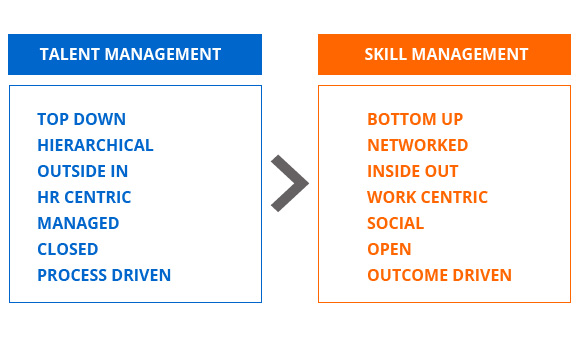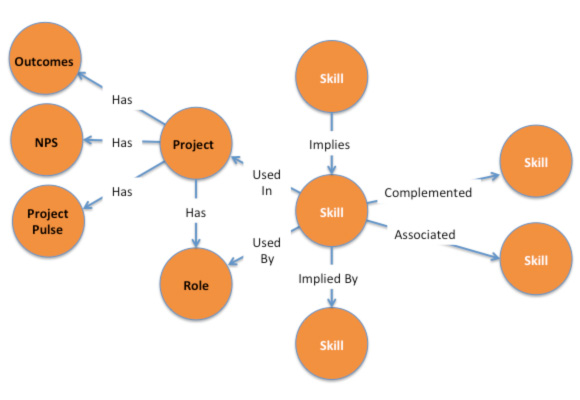Skill management or talent management?
“Talent Management looks at you from the outside while Skills Management is looking at you from the inside out. TeamFit is what connects the two.”
Chuck Hamilton
2017 is shaping up to be the year of ‘skills.’ Everywhere you go, people are talking about skills, skill gaps, skill trends, up skilling and reskilling. We are being asked what skills we have, how we use them and who we use them with.
These are all good questions. In a world where companies say that people are their most important assets but at the same time are making massive investments in robots and artificial intelligence, skills come to the forefront. They are becoming the currency of knowledge work.
Individuals want to make sure they have and are developing the skills that companies will need for future projects.
Companies want to make sure that they have the skills they need to achieve their goals, identify any skill gaps that may exist and plan how to close these gaps.
Just as important, companies to understand their differentiating skills. It is differentiating skills that win projects and drive profits.
If you are the CEO of a professional services firm please take this short survey. It will help you think about your own leadership skills and how you differentiate amongst your peers. If you are interested in learning more, we will provide you with a personalized report that benchmarks you and your company with your peers.
Many companies see skill management as an add-on to their talent management or human capital management system. This will not cut it in today’s fast-paced, performance-driven environment where people are taking more and more control over their own careers. Talent management sees ‘talent,’ that is the people with skills, as something to ‘manage.’ This is not how things work in the real world. The skills belong to the people and not to the company, skill management recognizes this fact, and enables people to own their own skill profiles and use them for their own professional development and, most importantly, to get the work they want.
FROM TALENT MANAGEMENT TO SKILL MANAGEMENT

One cannot simply tack skill management onto existing talent management platforms as they are based on different assumptions. HR managers do ‘talent management’ to employees. Professional knowledge workers use skill management to manage their own skills, on their own and through their social networks. It is skill management that will drive performance for knowledge workers and the companies that depend on them.
As a result, a new generation of companies offering skill management platforms is emerging.
One of the original vendors in this field is Skills DB Pro. This company offers a very good first step towards skill management and even has a well-supported approach to getting started with skill management using Excel spreadsheets. As spreadsheets are what most companies currently do for skill management this is very helpful. This solution does have it limitations though. It still has a top-down feel and does not leverage the social dynamics around skills.
TalentSky offers a more modern approach. It offers value propositions to both companies and individuals.
Our offer is Ibbaka Talent, which is free for individuals, provides a powerful skill management solution for professional services companies.
Unlike TalentSky, Ibbaka Talent is built for companies doing project-based work, like business consulting, consulting engineering and digital agencies. The TeamFit Skill Graph maps people and skills to projects and roles and incorporates data about project outcomes. This makes skill optimization a possibility.
SKILLS, PROJECTS, ROLES ARE MAPPED TO INDIVIDUALS
SKILLRANK™ IS CALCULATED ON EACH SKILL BASED ON MULTIPLE SOURCES OF EVIDENCE

The data organized in the Skill Graph is used to create Skill Maps for any individual, team or for the whole company. These Skill Maps provide a rapid and intuitive way to understand the skills present and how they are being used and to find skill gaps. TeamFit has several different types of Skill Maps that give different perspectives. These are being made available as part of TeamFit V2 in February.
Some examples of skill maps are shown below.


